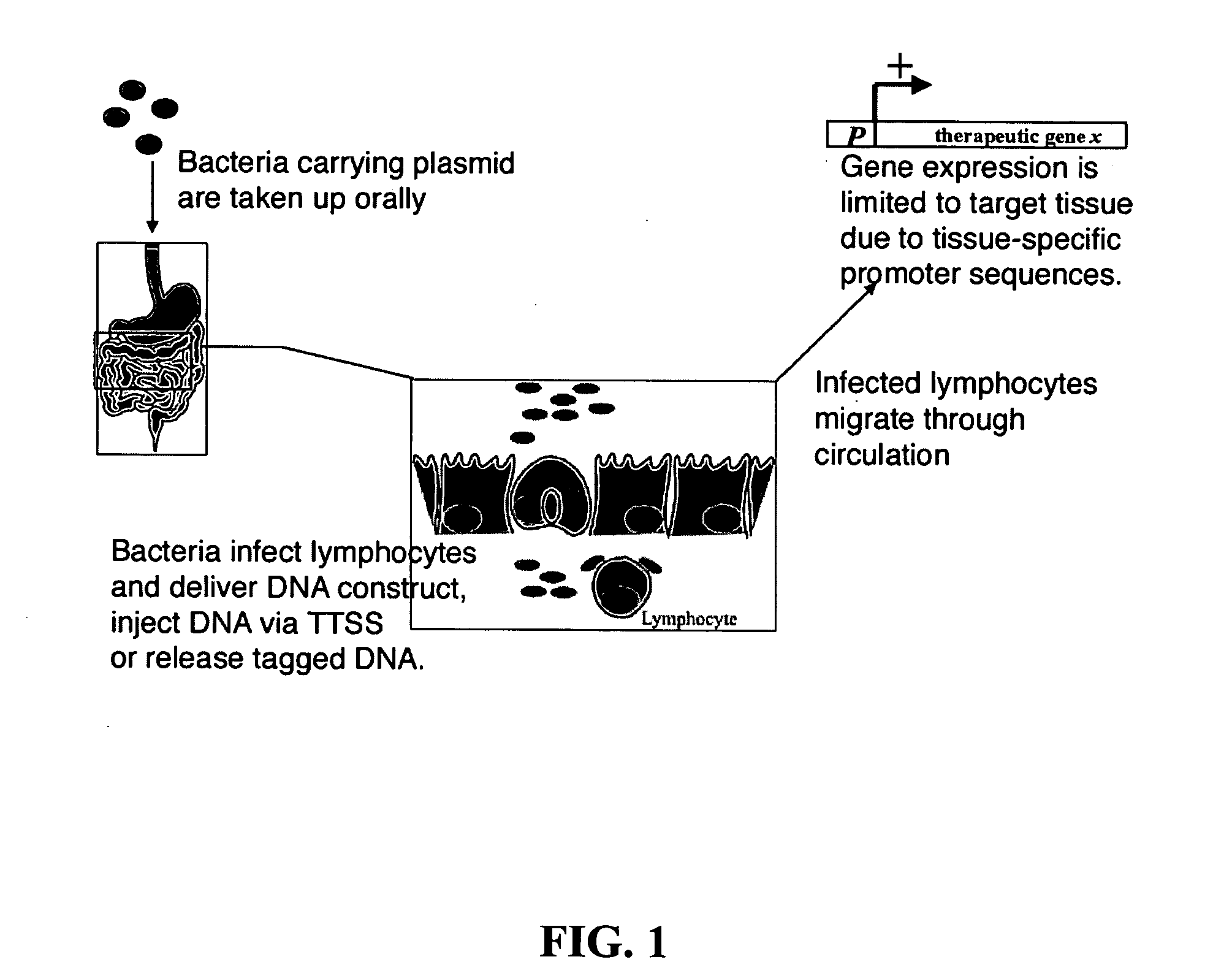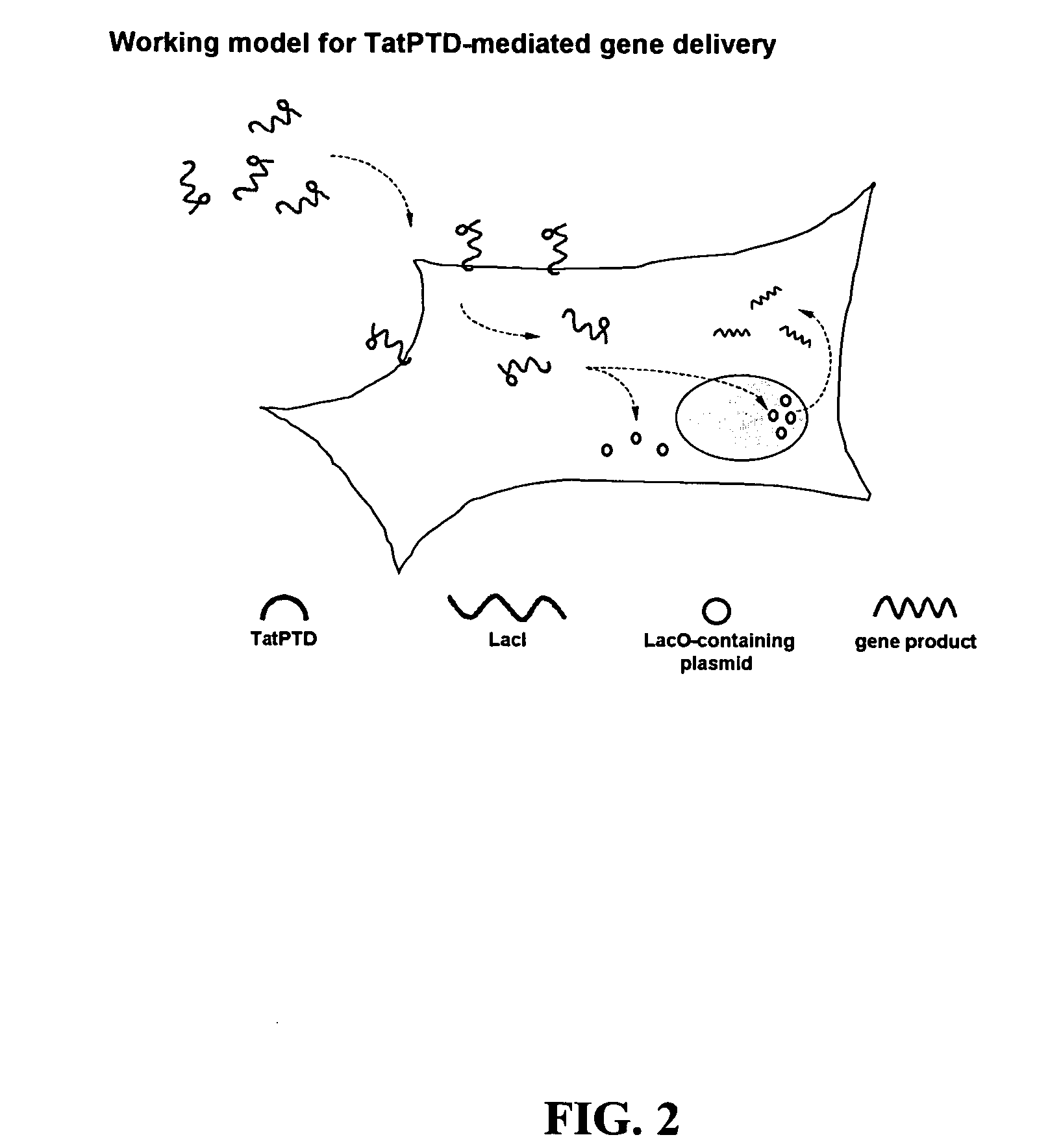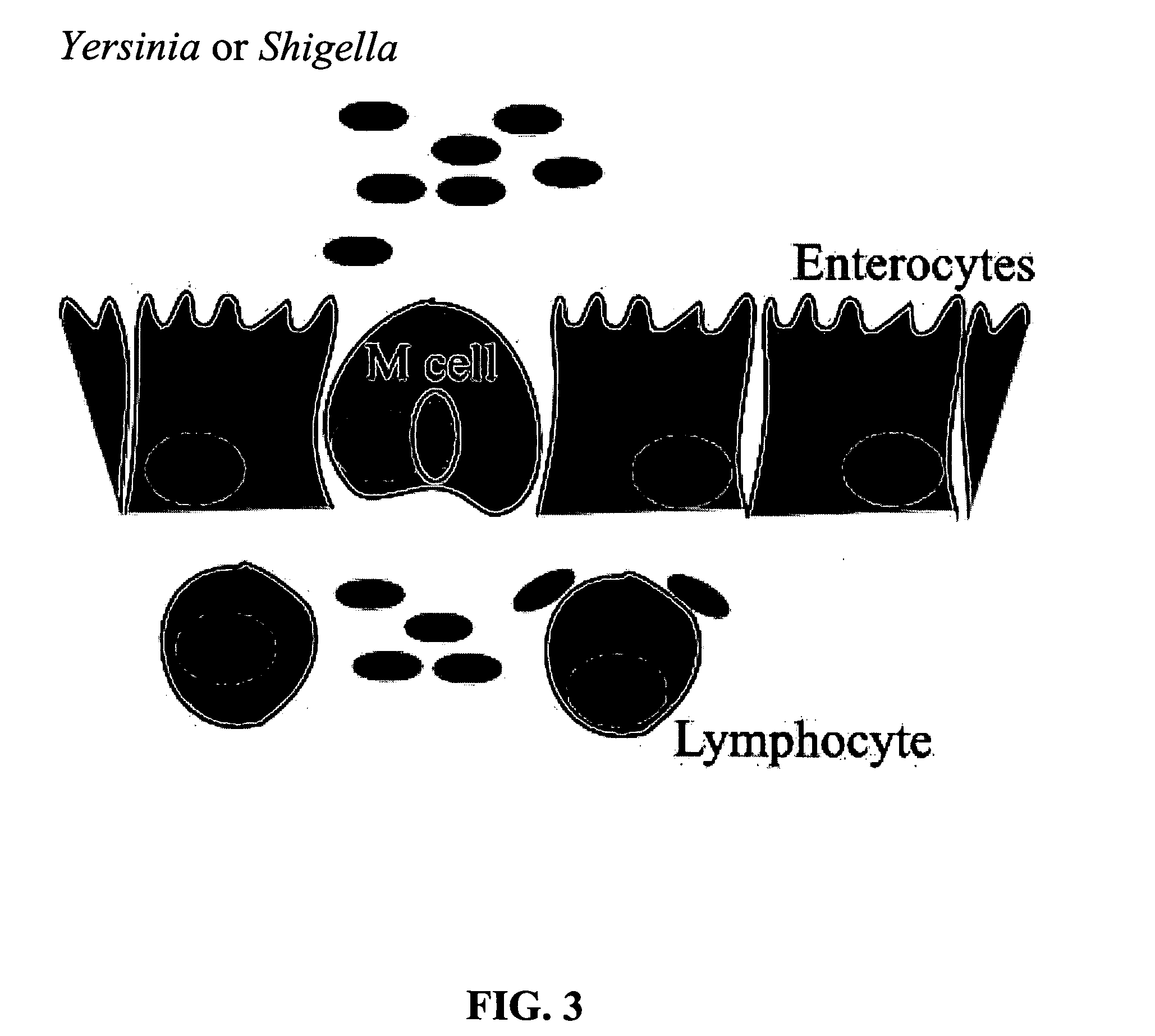Bacterial vector systems
a technology of bacterial vectors and plasmids, applied in the field of protein chemistry, gene therapy, microbiology, can solve the problems of delayed clinical application difficult preparation and purification of gene therapy vectors in large quantities, and limited the potential of conventional gene therapy, so as to achieve efficient and rapid delivery of one or more polynucleotides
- Summary
- Abstract
- Description
- Claims
- Application Information
AI Technical Summary
Benefits of technology
Problems solved by technology
Method used
Image
Examples
example 1
Construction of the YopE-LacI Fusion
[0141] Materials and Methods
[0142] The lacI gene was amplified from E. coli W3110 chromosomal DNA as a 1.1 kb fragment using primers SP044F (5′-GTGGGTACCGTGAAACCAGTAACG-3′ (SEQ ID NO:18)) and SP044R (5′-TAGGATCCGCTCACTGCCCGCTTT-3′ (SEQ ID NO:19)). The fragment was digested with KpnI and BamH1 and cloned in-frame downstream of a fragement containing the first 100 codons of yopE and the native yopE promoter from Yersinia enterocolitica into the vector pHSG575, yielding pSS350. Variants of this plasmid were created by removing the EcoR1-NdeI fragment encompassing the promoter region upstream of lacI and replacing it with the promoter and first 15 codons of yopE (pSS352), or with a fragment spanning the promoter and first 49 codons of yopE (pSS357). To generate a fusion protein with a smaller LacI domain, the first 334 codons of lacI were amplified by PCR from pSS350 and ligated to pSS356 digested with Kpn and BamHI, producing pSS357.
[0143] DNA bin...
example 2
Construction of Regulated Lysis Vectors
[0148] The Shigella uhpT gene is specifically expressed within the intracellular environment of mammalian cells. This effect is mimicked in vitro by growth in the presence of 0.4% glucose-6-phosphate, the major form of glucose inside the mammalian cell. Other carbon sources do not allow expression of this gene. When fused to an open reading frame, the uhpT promoter directs the expression of that gene within the intracellular environment. A fragment containing the uhpT promoter was fused to the gene encoding T7 polymerase to create pFZ27. This plasmid is integrated into the attB site in a T7 polymerase resistant strain of Shigella flexenri to produce strain SF2019 or into standard laboratory strains of E. coli. The lysis construct consists of a plasmid carrying the T7 promoter fused to rabbit defensin. When grown in the presence of 0.4% glucose-6-phosphate, the strains are killed; survival is less than 1×10−4.
[0149] A pFZ27 (PuhpT-T7 pol const...
example 3
[0154] A pFZ49 (synthetic rat defensin gene NP-1 fused with pelB leader under the control of the T7 promoter) was constructed. Primers FZ001 (5′-GGATCCGGTGACCTGCTACTGTCGTCGTACTCGTTGCGGTTTCCGTGAACGTC TGTCCGGTGCTTG-3′ (SEQ ID NO:24)) and FZ002 (5′-GTCGACTTAACGACAGCACAGACGGTAGATACGACCACGGTAACCGCAAGC ACCGGACAGACGTTC-3′ (SEQ ID NO:25)) were annealed and extended with Taq polymerase. The resulting product was digested with BamHI / SalI and cloned into pET25b at the BamHI / SalI site, yielding pFZ1. The XbaI / XhoI fragment from pFZ1, containing pelB-NP-1 fusion gene, was cloned into pET23a at the XbaI / XhoI site, yielding pFZ49.
[0155] A pFZ50 (synthetic rat defensin gene NP-1 fused with pelB leader and ΦX174 lysis E gene under the control of the T7 promoter) vector was also constructed. ΦX174 E gene, whose product is responsible for lysis, was PCR amplified from ΦX174 RF DNA with primers FZ013 (5′-AAGGCCTACTGACCGCTCTC-3′ (SEQ ID NO:26)) and FZ014 (5′-CGTGCATGCTTGCCTTTAGTAC...
PUM
| Property | Measurement | Unit |
|---|---|---|
| volume | aaaaa | aaaaa |
| compositions | aaaaa | aaaaa |
| pharmaceutical compositions | aaaaa | aaaaa |
Abstract
Description
Claims
Application Information
 Login to View More
Login to View More - R&D
- Intellectual Property
- Life Sciences
- Materials
- Tech Scout
- Unparalleled Data Quality
- Higher Quality Content
- 60% Fewer Hallucinations
Browse by: Latest US Patents, China's latest patents, Technical Efficacy Thesaurus, Application Domain, Technology Topic, Popular Technical Reports.
© 2025 PatSnap. All rights reserved.Legal|Privacy policy|Modern Slavery Act Transparency Statement|Sitemap|About US| Contact US: help@patsnap.com



